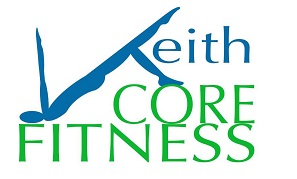
Do you work a desk job and sit all day? Over the years, with or without Pilates, we have heard increasing reports on how long periods of sitting down is just plain detrimental to one’s health and fitness.
Deflated Glutes
Sitting requires absolutely no glute activation, so anyone who wishes to have a perky backside would do well to avoid long periods of sitting. Further, underdeveloped glutes impinge your ability to make a powerful stride, maintain stability and power through workouts. Exercise your glutes with Pilates exercise and see the difference it can make to your core fitness and stamina.
Tight Hips
Flexible hips are a must when working out and for performing daily activities such as walking, running and climbing stairs. When sitting, the hip flexor muscles are in a shortened state and can remain that way, affecting your stride length and range of motion. As a result of poor hip mobility , the elderly are more prone to falling and slipping, while active individuals may develop muscular imbalances.
Nonexistent Abs
Ab muscles are revealed when body fat is lowered, but even then, they won’t pop out if you don’t work your core regularly. When slumped over a chair, you are not activating your core muscles to keep you upright, and this can lead to posture-wrecking conditions such as swayback or hyperlordosis.
Heart Disease
Heart muscles need to be strong and healthy to eliminate fat and supply the body with healthy blood cells. Muscles are less efficient at burning fat when we sit down for too long, allowing harmful fatty acids to make its way to the heart which could lead to clogging. Long periods of sitting have also been linked to elevated cholesterol and high blood pressure, not to mention sedentary individuals are twice as likely to develop cardiovascular disease than people who have healthy and active lifestyles as standard.
Brain Fog
Sitting for too long causes the brain to stagnate. Active muscles pump fresh oxygen and blood through the body and brain. This triggers the release of all sorts of mood and brain-enhancing chemicals common in Pilates practise. However, when we are sedentary, everything slows down, including brain function.
Tight Upper Back and Neck
A protected and healthy neck is important in Pilates training. Craning your neck forward and tilting your head towards the phone can cause neck strains or damage to the cervical vertebrae. When done repeatedly, this could lead to permanent damage. Slumping or slouching also overextends the back and shoulders, particularly the trapezius muscles which could lead to neck aches. Pilates stretching and exercise gently supports the neck function strengthening the neck and back muscles.
Unhealthy Spine
Pilates routines gently support and strengthen the muscles around the spine. When we move our torsos, the soft discs between vertebrae contract and expand like sponges, soaking up nutrients and blood. When sitting for prolonged periods, the opposite happens; collagen hardens around ligaments and tendons, and discs are squashed in awkward positions. People who exercise regularly have stronger spines and vertibrae compared with people sit for most of the day are also at risk for herniated disks.
Weak Bones
Weight-lifting activities such as running and walking stimulate lower body bones to grow stronger, denser and thicker. Studies show that the recent surge in osteoporosis cases is partially attributed to longer periods of sitting and increasing inactivity, particularly among the younger generation. For strong bones, good healthy nutrition and lean muscle weight training are helpful in protecting bone density.
